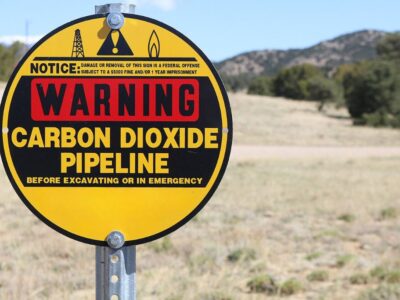Plenty of blame to go around

The Oil Spill Commission has released a chapter from its upcoming report on the Deepwater Horizon disaster. The Commission describes this chapter as containing the report’s “key findings”. The chapter focuses on the operations immediately preceding the explosion. According to the Commission, BP, Halliburton, Transocean, the oil industry as a whole, Congress, and multiple presidential administrations all share responsibility for the blow-out and its consequences.
From the report:
The well blew out because a number of separate risk factors, oversights, and outright mistakes combined to overwhelm the safeguards meant to prevent just such an event from happening. But most of the mistakes and oversights at Macondo can be traced back to a single overarching failure—a failure of management. Better management by BP, Halliburton, and Transocean would almost certainly have prevented the blowout
by improving the ability of individuals involved to identify the risks they faced, and to properly evaluate, communicate, and address them. A blowout in deepwater was not a statistical inevitability. . . .
Decisionmaking processes at Macondo did not adequately ensure that personnel fully considered the risks created by time- and money-saving decisions. Whether purposeful or not, many of the decisions that BP, Halliburton, and Transocean made that increased the risk of the Macondo blowout clearly saved those companies significant time (and money).
There is nothing inherently wrong with choosing a less-costly or less-time-consuming alternative—as long as it is proven to be equally safe. The problem is that, at least in regard to BP’s Macondo team, there appears to have been no formal system for ensuring that alternative procedures were in fact equally safe. None of [the key decisions] appear to have been subject to a comprehensive and systematic risk-analysis, peer-review, or management of change process. The evidence now available does not show that the BP team members (or other companies’ personnel) responsible for these decisions conducted any sort of formal analysis to assess the relative riskiness of available alternatives. . . .
Government also failed to provide the oversight necessary to prevent these lapses in judgment and management by private industry. As discussed in Chapter 3, MMS regulations were inadequate to address the risks of deepwater drilling. Many critical aspects of drilling operations were left to industry to decide without agency review. For instance, there was no requirement, let alone protocol, for a negative-pressure test, the misreading of which was a major contributor to the Macondo blowout. Nor were there detailed requirements related to the testing of the cement essential for well stability.
Responsibilities for these shortfalls are best not assigned to MMS alone. The root cause can be better found by considering how, as described in Chapter 3, efforts to expand regulatory oversight, tighten safety requirements, and provide funding to equip regulators with the resources, personnel, and training needed to be effective were either overtly resisted or not supported by industry, members of Congress, and several administrations. As a result, neither the regulations nor the regulators were asking the tough questions or requiring the demonstration of preparedness that could have avoided the Macondo disaster.
The full report is scheduled to be released on January 11.








One Reply to “Plenty of blame to go around”
Comments are closed.